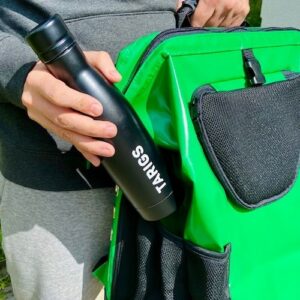
Go away!
In addition to the dog collar and a few other things, the dog leash is probably the first thing every (future) dog owner has bought. Just like dog collars and dog harnesses, there are now countless types of dog leashes. Some are seen more often than others. But for all of them the following applies: They are made for a wide variety of needs and there are many different things to consider when using them.
Of course, the numerous lines are also available in different widths, shapes and materials.
The classic
The most popular dog leash is definitely the leash or the leash. These types of dog leashes come in a wide variety of colors, shapes and materials. As a rule, you can adjust them in several places and adjust the length to suit your needs. In addition, you can relax around the forest walk.
The jerky
The classic dog leashes are sometimes also available with shock absorbers. These are especially useful for large and / or strong dog breeds, because, as the name suggests, the jerk that can occur when pulling on a leash is dampened for the dog as well as for masters or mistresses. This is not only more pleasant for both, but also protects against injuries.
The short ones
Short guides are especially useful for large dogs that move in large cities. They enable you to guide your fur nose close to you and to keep very good control. Basically, this dog leash looks like a big wrist strap. They are available in different lengths and materials. For example leather or fabric.
The flexible
Some love it, others hate it: the flexible line. Everyone knows them and presumably everyone has been blocked from walking through them or the line has wrapped their own legs. The reason for this is the often improper use and the associated loss of control. Flexilines differ in size and design, but basically they always have the same structure. There is the plastic housing with a rolling mechanism, which ensures that the line, ie the band or the cord, is “taut”. The actual line can vary in width and length. With a small stopper, the line can be fixed in the appropriate length if desired. This is the only way that the line can drag over the floor.
There are flexilines for different size and weight classes. However, it is extremely important that flexilines are used ONLY with dishes. Because even with a 5 m leash the dog can build up within a 10 m speed. And the bigger the dog is, the more power it has. Accordingly, traction. Even a 30 kg dog can build up such a strong jerk that you probably won’t be able to hold it. This jerk affects not only you, but also your dog, and if he only wears a neck bath, on his cervical vertebrae. This is not only painful but also dangerous.
Nevertheless, if you use a flexile line properly, you can secure yourself and your fur nose a good deal of freedom.
The retrievers
The retriever leash, also called moxon leash, is a combination of a dog leash and a dog collar. You can easily pull these types of dog leads over your head. Finished! This makes them particularly easy to use. Potential entanglement in the wild is no longer possible. There is usually a retriever leash, whether leather or fabric, in one size. Thanks to a small stopper, the leash can be adjusted to the perfect size for your own fur nose. The perfect size is set when the line cannot slide over your ears. Due to the fact that the leash is not firmly attached to the neck, only dogs with a retriever leash should be on the move, who theoretically run properly without a leash anyway. Because the safety aspect with these types of dog leashes can be classified as relatively low.
The towing
Everyone is probably familiar with the towline. They are also available in various widths, lengths and materials. Whether leather, cotton, nylon or organic Thane – there are no limits to your imagination. The size and length should always be matched to the four-legged friend. They are also available with and without a hand strap or with a wooden ball at the end. If the towline is actually used for sanding afterwards, you should rather use a variant without a loop, since only the dirt collects here.
This leash is traditionally used in training, for example in retrieval or retrieval training. The handling is only for experienced users. Otherwise the 5 m leash hangs on a dog 10 m away. Then the sense of the towline literally falls by the wayside. The point of the leash is that your fur nose has a lot of freedom, but you still have a lot of control.
In any case, it is important that you use a towline just like the flexile line ONLY with harness. This way, the potential pull can be better distributed to the dog’s body. It sounds like a horror story, but it actually happens more often than you think. My personal horror story happened right in the neighborhood. A small dachshund with a towline and collar ran after a squirrel and across the street. A car drove over the towline, not over the dog, but the extreme jerk on the dog’s neck broke the cervical spine and the dog was suddenly dead. Please take a moment and think about it. In my opinion, the risk is far too high to use a collar instead of a harness in the combination. And the excuse that the dog pulls less on the collar when he almost strangles himself than on the harness doesn’t apply to us either.
All these different lines are also available with reflectors if necessary for better visibility. With so-called paddocks you can also lead two dogs on a leash. Other types of dog leads include jogging and demonstration leads.
You can find all dog leads at TARIGS here.



